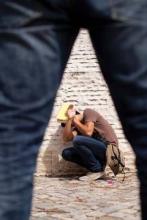Concern is growing that adults in the United States are overreacting to bullying that takes place every day in schools and communities across the country. Some point with alarm to the enactment of antibullying laws in states such as Indiana, which – among other things – require the state’s department of education to develop guidelines to help schools and safe school communities establish bullying prevention programs.
Indiana’s antibullying law came in the wake of the horrific suicides of two adolescent girls. In one case, a 14-year-old West Lafayette, Ind., girl reportedly hanged herself in early April from a tree, after leaving a note addressed to her 8th-grade classmates that said, "Its [sic] bullying that killed me. Please get justice."
About 1 month later, a 14-year-old 7th-grader in Marion, Ind., reportedly committed suicide by using a tie to hang herself on a set a bleachers on her school grounds. The Marion girl’s family and friends cite bullying as the factor that motivated her to act.
For the victims, bullying is indeed a very serious problem. Young people don’t know where to go or what to do or whom to talk with about their dilemma. Far too often, the attacks on their fragile egos prove too much to bear. Those who do survive often suffer more severe mental health problems, such as long-term depression, poor mental and physical health, and suicidal thoughts, than do their peers who are not bullied.
Antibullying laws criticized
Emily Bazelon, a journalist and an attorney who some say has become an authority on bullying, has written a new book on the topic called "Sticks and Stones: Defeating the Culture of Bullying and Rediscovering the Power of Character and Empathy" (New York: Random House, 2013). In the book, Ms. Bazelon argues against antibullying laws that push toward criminalization and define bullying too broadly. She contends that much of the conflict that occurs between youngsters is something short of bullying and says she does not want to see bullies stigmatized.
As I’ve written before, being a bully is a strong predictor of delinquency. For example, a prospective study of 503 boys who were followed from ages 6 through 19 years found that the strongest predictor of delinquency was being a bully at age 10 years. More than 32% of bullies become delinquents, compared with 22.5% of nonbullies, the study showed (J. Aggress. Confl. Peace Res. 2011 [doi: 10.1108/17596591111132882]).
A more recent study of 5,614 adolescents aged 16-18 years conducted by researchers in Greece found no socioeconomic associations for victimization. However, they did find that lower school performance and unemployment of the father was far more likely among perpetrators and that "economic inactivity of the mother" was more likely in students who were both victims and perpetrators. "These results were largely confirmed when we focused on high frequency behaviors only," the researchers wrote (Child Adolesc. Psychiatry Ment. Health 2012;6:8). "In addition, being overweight increased the risk of frequent victimization."
I agree with Ms. Bazelon that criminalizing bullying is going too far and overpolicing children is wrong. We are not a police state, and we do not want children growing up fearing that they will be arrested for "being kids." Ms. Bazelon is correct on that score. Legislators are not child development experts and often go too far.
There are ways to approach the problem, and spare the bully and the victim. The Olweus bullying prevention program, created by Dan Olweus, Ph.D., a Swedish psychologist, really works when all the players are brought together to change the culture so that bullying does not happen.
The method involves four basic rules. First, every adult, from the janitor to the principal, must agree to be part of this program. Second, the children have to be alerted at an assembly, and classroom discussions about every bullying event must take place in the school. Bullying meetings takes precedence over all other activities.
Third, the bully must become an antihero. The school has to learn that hurting smaller kids is a no-no and will stop. Currently, the bully is the hero; he uses his power and impresses many of the other children in the schoolyard.
Finally, schools must get the parents to buy into the process. This is the most difficult part of the Olweus project because, far too often, parents approve of bullying as a normal activity of children.
Does time really heal?


